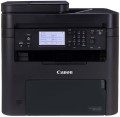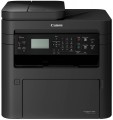Max resolution
The maximum resolution of the image to be printed. It is usually indicated by two numbers indicating the number of dots per inch (dpi) horizontally and vertically, for example 1200x600. The detail of the image depends on this parameter – the higher the resolution, the more fine details the printer is able to convey and the better their image will be. High print resolution is important, foremost, operating with graphic material; low resolution is sufficient for high-quality text display. So there are the following options:
600x600,
1200x600,
1200x1200,
1800x600,
2400x600,
2400x1200,
2400x2400,
4800x600,
4800x1200,
4800x2400,
5760, and
higher print resolutions.
First page print
The time passed from pressing the Copy button to the completion of the first copy in MFPs. Typically specified for low quality black and white printing on A4 paper. The time for the first copy to be released is the longest (because of the time to prepare for work and scan the document); subsequent copies of the same document are printed much faster.
Fast first copy time is important if you have to copy documents frequently.
B/W copy
Black and white copy speed – the number of copies of one page that the MFP can produce in 1 minute. Typically indicated for poor print quality. This option is important if you often need to make many copies of a single document.
B/W printing
The number of pages the printer can produce per minute in black and white mode. Typically indicated for low print quality, higher print quality takes longer. This setting is important if you need to frequently print text documents.
Cartridge model
Types of cartridges (both black&white and colour) used in the MFP. Some models of the MFP are able to work with third-party cartridges, but this feature usually refers to undocumented, and the manufacturer's warranty applies only to specific types of cartridges. So, use third-party compatible cartridge models with caution.
More Features
Amazon Alexa, Google Assistant, Cortana. The presence of one or more of these names in the specs of the MFP means that the device is compatible with the corresponding
voice assistant — a system that allows you to give commands to various devices using your voice and receive voice notifications. Note that this is usually not about the presence of an assistant in the MFP itself, but about the ability to connect the device to a gadget equipped with a voice assistant — for example, a smartphone or laptop. However, this feature provides additional convenience — it allows you to control the MFP with just your voice, without using the control panel or touch screen, in particular, to send various files to print. At the same time, you should note that the functionality of the voice assistant and the possibilities for connecting it may be limited. For example, Amazon Alexa is able to print only content directly associated with the assistant (shopping lists, calendar templates, coloring books, and some other types of materials) and does not allow you to randomly select a file for printing from a third-party source, and you need to connect a device with such a voice assistant via a local network — this cannot be done directly via USB.
— Keyboard. In this case, we are talking about a full-fledged QWERTY keyboard, like those used in computers and laptops. For basic tasks, such equipment is not required, so the keyboard is a sign of a fairly adv
...anced device. Models with this function, usually, provide a network connection (via LAN and/or Wi-Fi), and also have additional tools for managing materials (sorting, sending by fax or e-mail, etc.).
— Built-in fax. Allows the MFP to receive and send faxes. Two devices are involved in such a transfer: the first scans the document and transmits information via the telephone network, and the second prints a copy of the document based on this information. Despite the popularity of Internet technologies, fax communication is still quite widely used in business. Therefore, the MFP with built-in fax can be recommended primarily for use in the office. Fax is often combined with a telephone.
— Disc label printing. This function allows you to arrange the recorded disc (Printable CD-R/RW and DVD-R/RW) as you wish. Special software can be included to the package of the MFP with such a feature to create layouts for label printing.CPU frequency
The clock speed of the processor installed in the MFP. Theoretically, the higher this indicator, the faster the device is able to handle with various tasks; high performance is especially important when printing high quality images, scanning at high resolutions, etc. However, in fact, the capabilities of the MFP, in addition to the processor, depend on a number of other specs, and this point is more for reference than practically significant, and when choosing, it is worth focus on more obvious performance specs (copy speed, print speed, etc.).
Scanner Colour Depth
The colour depth supported by the MFP scanner. This setting determines the number of colour shades that the device can recognize. Therefore, the overall quality of the scan directly depends on it (although other features of the device also affect this quality).
Of course, it makes sense to be focused primarily in colour depth if you plan to intensively use the scanner for full-colour images like photos, paintings, etc. If the MFP is purchased mainly for documents, where the maximum variety of colours is the logo on the letterhead or the stamp, it barely makes sense to pay special attention to this spec.
As for the colour depth, we note that the total number of recognizable shades can be determined using the formula “two to the power of the number of bits”. For example, a 24-bit scanner will recognize 2^24 = 16.7 million colours (approximately). This value is considered quite sufficient for everyday use, and 36-bit is also sufficient for relatively simple work tasks such as printing brochures and other images that do not require high colour fidelity. But for professional work with colour, you should choose more impressive scanners; in the most advanced models, the colour depth can reach 60 bits.
Feed tray
The maximum number of sheets that can be loaded into the MFP feeder at one time. Blank paper is taken from the feed tray for subsequent printing; the more sheets fit there, the less often you will have to reload the MFP with blank paper.

